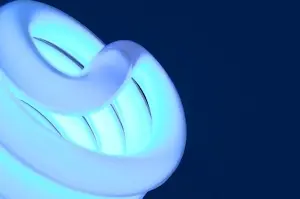With the solid state lighting industry expected to grow intensely through 2020, some groups are talking about exactly how the world will transition to low voltage LED lighting.
Since the dawn of Edison's invention, the light bulb design has undergone very little revision from it's early years, something that is going to change. However, people have fallen in love with the light bulb and the kind of light it emits. Designing and manufacturing a modern, efficient bulb that replicates the lighting experience we have be accustomed to has challenged even for the largest companies such as Philips and GE, reported NBC News.
"Lighting is an art and a science," said Terry McGowan, a former manager of the lighting division at GE who now serves as director of engineering for the American Lighting Association. "The appearance of fixtures and bulbs becomes part of our culture, and when you try to change culture, you better have a strong reason to do so. Manufacturers are trying to capture these billions of sockets now residing with incandescent bulbs. And you have to be the size and shape of what's in those sockets. If you don't get that socket now, it won't be available again until who knows when. It's a desperate horse race."
Making improvements
According to a Markets and Research report cited by PCB Design, the LED lighting system market is forecast to really take hold in 2013. In 2012, the LED market raked in $93 million in revenue. However, by 2020, LED revenue is expected to grow to $55 billion. The use of an Energy Management System in commercial buildings is expected to increase with the widespread adoption of LEDs, integrating efficient bulbs with lighting controls and advanced lighting management systems,
"The Amish have nothing but kerosene lamps in their living rooms," McGowan said. "The consumer can't be dictated to in lighting, and the faux old-fashioned bulbs with carbon filaments that glow are very popular now. It's appearance lighting, not efficient lighting. LEDs won't take over 100 percent of the market. All these technologies will exist, but comfort level will dictate how much adoption there is, and if you make it familiar it accelerates the comfort level."
Todd Manegold, director of LED lamps at Philips, there are an estimated 5.6 billion light bulbs in U.S. residential use. It's a billion-dollar question of how manufacturers transition from LED bulbs. Other manufacturers agree that the attributes of the classic bulb, its ability to diffuse heat and the quality of light, are desired by the customer. Some customers will always prefer lighting preference over efficiency, and vice versa. But the shape of the bulb, its aesthetic-quality, and its price point are still factors that deeply impact people's lighting choices.





